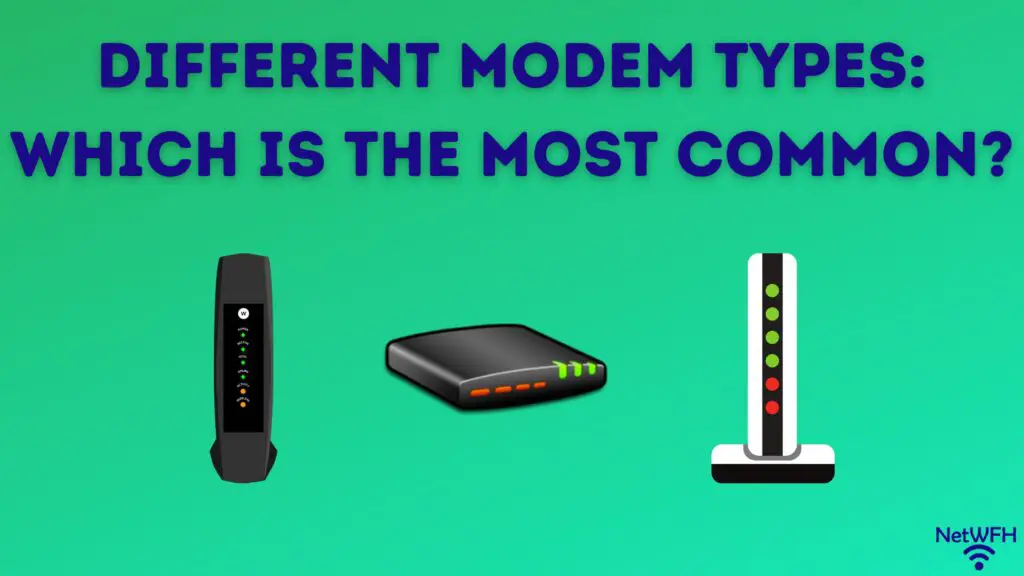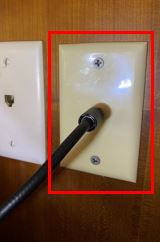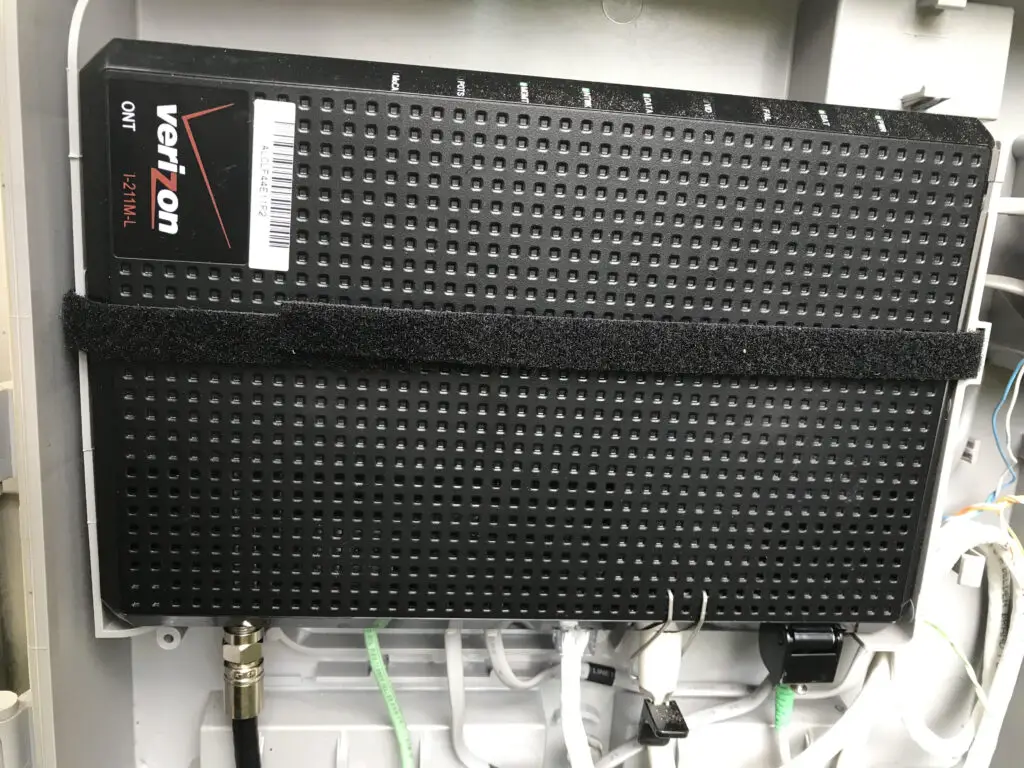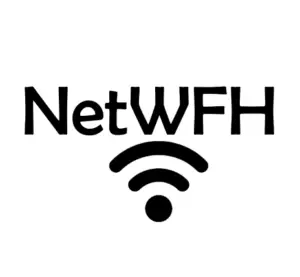This post contains affiliate links.

To many people, internet modems are little black boxes that provide homes with connections to the internet.
As if they weren’t confusing enough, you should know that there are different types of modems that are in use today.
So what are these different types of modems that you can use, and which type is the most common?
The different types of modems that are in use today are DSL, cable, and fiber optic modems. Cable modems are the most common type of modem because cable internet is the most common form of internet connection.
In this post, I’ll provide more detail about the different types of modems that you might see today. I’ll also explain which types of modems are the most commonly used.
What Are the Different Types of Modems?
Let’s take a closer look at the different types of modems and when they’re used.
Dial-Up Modems
Dial-up modems were the first type of internet modem ever developed. They used phone lines to communicate with the internet.
To get an internet connection, dial-up modems just needed to be connected to a phone jack in the home using a phone cable, like this one:

Due to the fact that dial-up modems used public phone lines, they were widely used at the time because virtually everyone had a telephone line in their home.
Unfortunately, the good times did not last for dial-up modems. This was due to advancements in internet technology (see the next modem type).
By today’s internet standards, dial-up modems were as slow as molasses. They delivered maximum internet speeds of 56 kilobits per second (kbps).
When advancements in internet speeds were made, dial-up modems were left in the dust.
As a result, you won’t see dial-up modems in use today.
Digital Subscriber Line (DSL) Modems
Digital subscriber line modems are similar to dial-up modems in a lot of ways.
Much like dial-up modems, DSL modems use phone lines to communicate with the internet. This makes them an option for a majority of households, as any home with an existing phone line is eligible to have a DSL internet plan.
Just like dial-up modems, DSL modems are connected to the internet via a phone cable. For your reference, check out the picture of the back of this modem. You can see a port labeled “DSL”. This is where the phone cable connects to the modem.
The difference between DSL and dial-up modems is the internet speeds they can support. According to some sources, DSL internet plans can provide internet speeds between 6 and 100 megabits per second (Mbps).
Based upon this information, it’s obvious that DSL modems support much faster speeds than the 56 kbps speeds that dial-up modems support.
I know this might seem confusing, seeing as both dial-up and DSL modems are using the same method (phone lines) to send and receive internet data.
This has to do with the advancements in technology I referred to in the previous section.
The technology behind DSL modems allows them to better utilize the phone lines to send and receive more data at a given time. In fact, advancements in DSL technology are still being made today.
These advancements in DSL technology are the reason why dial-up modems are no longer used. They simply can’t compete with the speeds that DSL modems support.
Cable Modems
Cable modems serve as a departure from the other two modems on the list so far.
That’s because they don’t utilize phone lines like DSL and dial-up modems do.
Instead, cable modems use a different technology that has become prevalent in many households today.
I’m referring to cable television.
To connect to the internet, cable modems utilize the same wires that deliver cable television to the home. This is done by using a coaxial cable (the same type of cable that connects to your cable box) to connect the back of the modem to a coaxial cable wall jack like this:

For reference, here’s a coaxial cable connected to the back of my cable modem:

Cable modems send and receive data over these cables at speeds much faster than dial-up and DSL modems. This has to do with the fact that coaxial cables allow more data to pass through them at a given time compared to telephone lines.
This is also known as bandwidth. Coaxial cables support more bandwidth than phone cables.
In fact, cable modems can support speeds faster than 500 Mbps. That’s more than five times faster than the speeds that the fastest DSL modems support.
Fiber Optic Modems
Fiber optic modems are the latest and greatest when it comes to modem technology. They’re designed to work with fiber internet, which was first offered to residential homes in the early 2000s.
Fiber modems send and receive data a different way than dial-up, DSL, and cable modems do. Instead of sending and receiving data in the form of pulses of electricity, fiber optic modems are able to send data in the form of light pulses.
This is the whole premise behind fiber optic internet.
Fiber internet is able to provide much faster internet speeds than dial-up, DSL, and cable internet plans because sending data via light pulses is much faster than sending data through electric pulses.
As you may have guessed, this also means that fiber optic modems can support faster internet speeds than dial-up, DSL, and cable modems can.
Currently, fiber modems (and internet plans) can support speeds close to 1 gigabit per second (Gbps). for reference, 1 Gbps is equal to 1,000 Mbps.
Yeah, that’s pretty fast.
Due to the fact that fiber internet is still a fairly new technology, many ISPs will install their own modem at your home when you purchase a fiber internet plan.
Here’s an example of an ISP’s fiber internet modem installation:

If you see one of these devices in person, you might see it labeled as an “ONT” device.
ONT stands for Optical Network Terminal.
Don’t be confused here. ONT is just a fancy term for a fiber optic modem.
Despite the fact that many ISPs will install their own fiber modems when you purchase a fiber internet plan, you can still purchase a few of them online. For reference, here’s an example of a fiber modem that you can buy online.
As fiber internet becomes more widely available (and cheaper), you can expect to see a whole lot more of these devices in home networks.
What Is the Most Common Type of Modem?
Now that we’ve broken down the different types of modems that’re available, it begs the question: which type of modem is most common.
At this stage in the game, cable modems are most frequently used.
According to a study done in 2022, it’s reported that more than 50% of US households have cable internet.
Do you know what this means?
This means that they have cable modems as well.
This is a pretty significant number, considering that fiber internet is utilized in about 20% of US households at the time of the study.
That means that 20% of US households have fiber modems. Although the study does not identify this directly, it’s safe to say the majority of the remaining percentage (30%) is comprised of mostly DSL modems.
For DSL modems, this number is trending in the wrong direction. DSL internet plans are finding it harder to compete with the speeds offered by cable and fiber internet, which results in fewer subscribers (and less DSL modems).
This is a trend I expect to continue in the future.
Speaking of the future…
I expect fiber modems to increase in popularity as fiber internet plans become more widely available to homes.
So although cable modems are the most popular at the moment (and for the foreseeable future), I don’t expect it to stay this way forever.
I’m a firm believer that fiber internet is the future of our connected world, and soon enough we’ll be using the fiber modems to prove it.
Wrap Up
Hopefully you now have a good understanding of the main types of modems in use today.
Odds are, if you walk into someone’s home today, they’ll have a cable internet modem. With that said, be on the lookout for more fiber modems moving forward.
If you have any questions about the different types of modems, please leave a comment below. If you found this information useful, here are some other posts that might be helpful for you:
What Are Modem Channels? How They Affect Network Speed
What Modem Do I Have? How to Find Out

